Argentina, Part 1: The Northeast into Buenos Aires
— Argentina — 10 min read
November 10 - 20, 2010
Argentina and Chile form the bottom half of South America and I was saving them for the southern summer, as the latitudes stretch all the way to Antartica in the south, but I still wanted to visit southern Bolivia first before heading south to Patagonia. I thought I could get across Paraguay and enter Bolivia that way, but the visa for Paraguay was going to take two weeks to process. And besides all the wrangles with the paperwork, I was still trying to get a replacement jet needle for sanDRina's carburetor. My mechanic friend in Chicago, Gus had sourced the parts but they couldn't be shipped to Brazil in time as my visa there was expiring, so I had them sent to Buenos Aires. At the same time, a friend-of-a-friend was flying from Chicago to Buenos Aires, so I arranged for a care package of miscellaneous items to be sent through him. And for the past few months I have been trying to arrange for a place to pick up a replacement set of Happy Trail panniers that the company from Idaho wanted to replace free of charge but customs in Brazil and other countries proved too big a headache. So, everything was converging on Buenos Aires and I headed there first, before turning north for Bolivia.
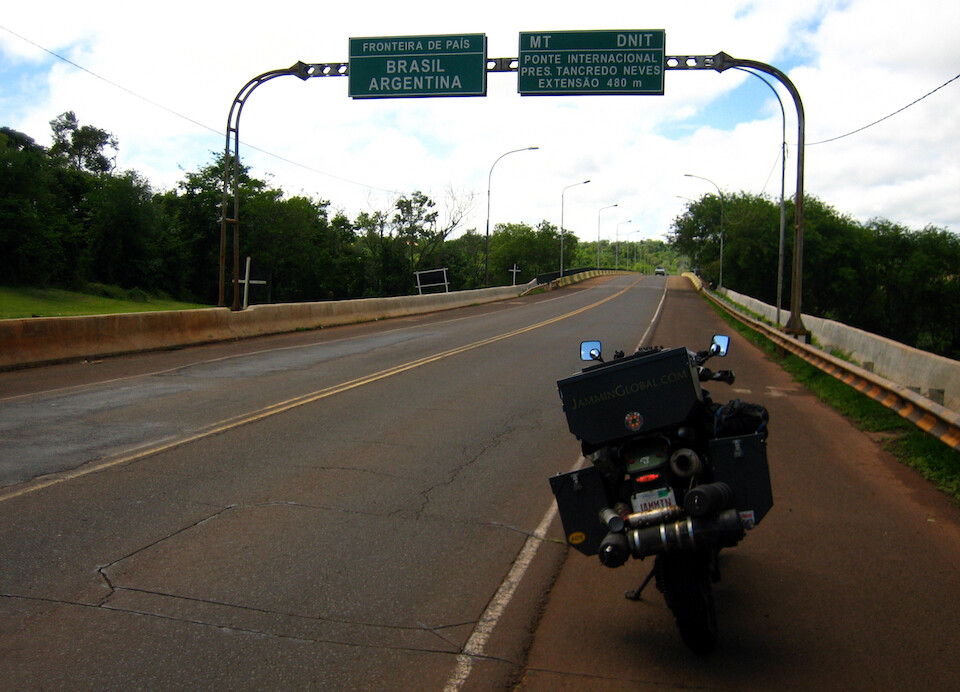
Exiting Brazil and entering Argentina.
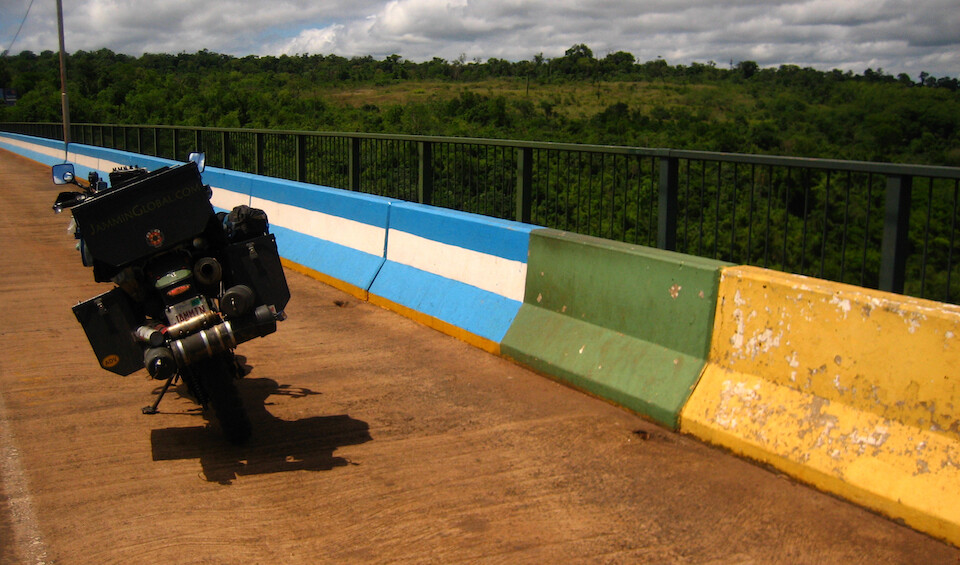
Where there's a bridge across a border, all through South America, I've seen the two countries paint their half of the bridge in the national flag colors.
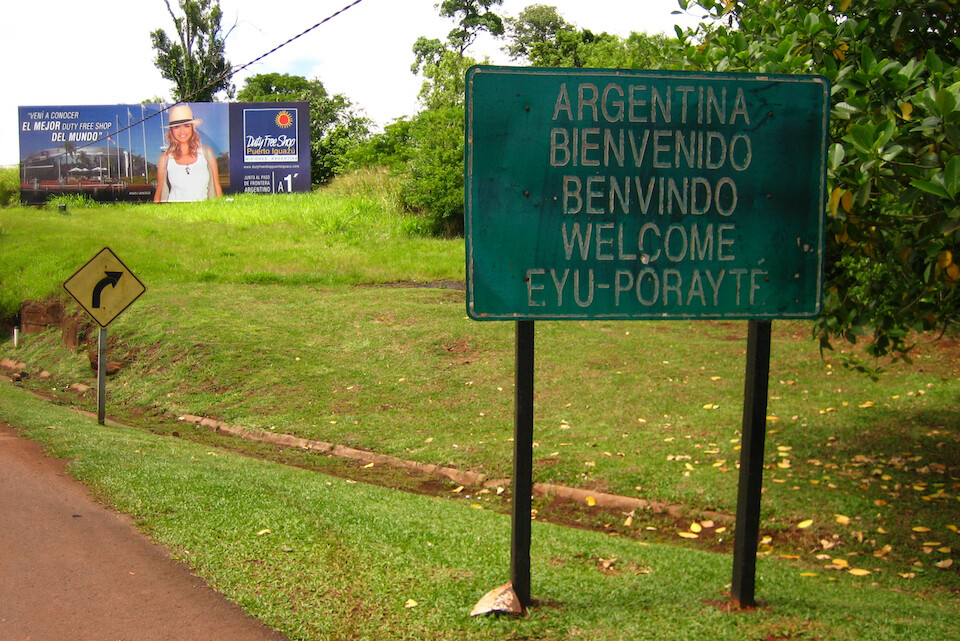
Welcome to Argentina... and there's duty free shopping to tempt all the traveling Brazilians.
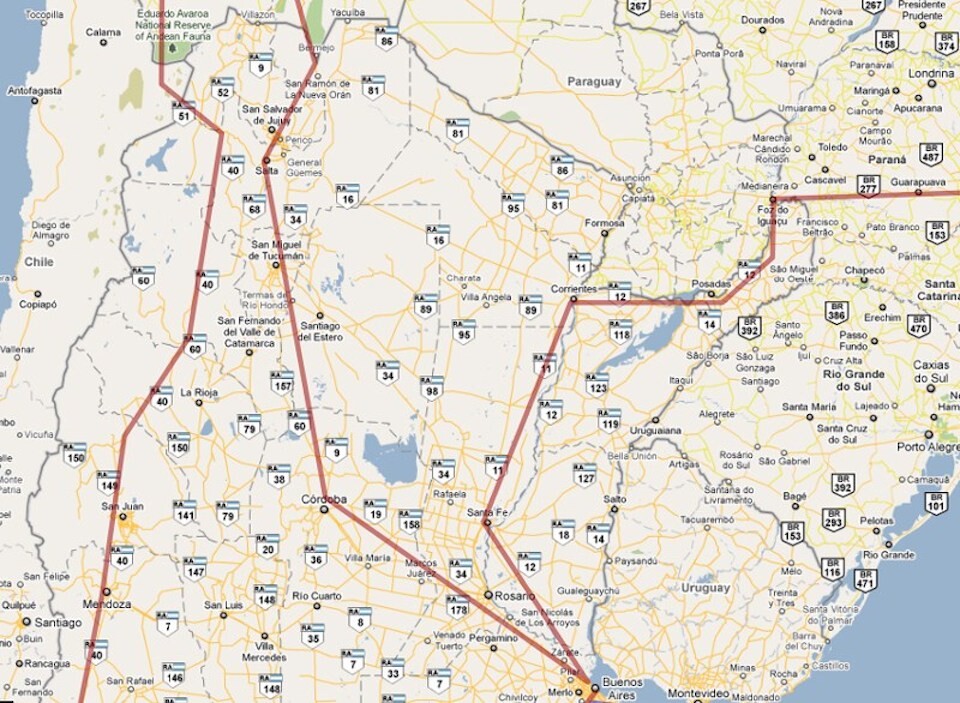
My route through northern Argentina. Click on it to go to the interactive version in Google Maps.
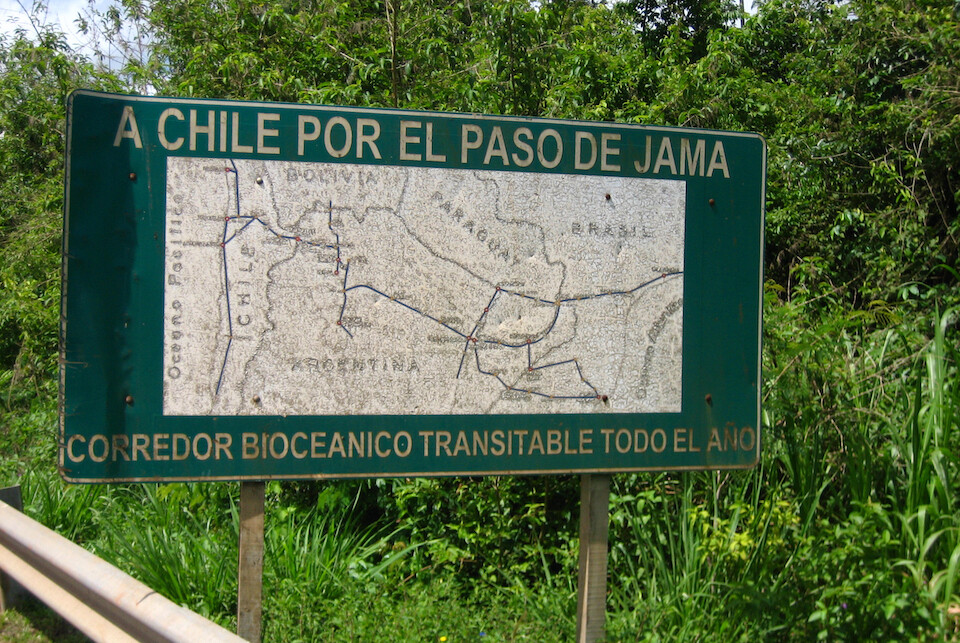
Interesting to see a sign board indicating the route to cut all the way across Argentina for entering Chile. I guess it's a commercial route to connect the two oceans and it wasn't so surprising after seeing the number of Brazilian travelers crossing at Paso de Jama.
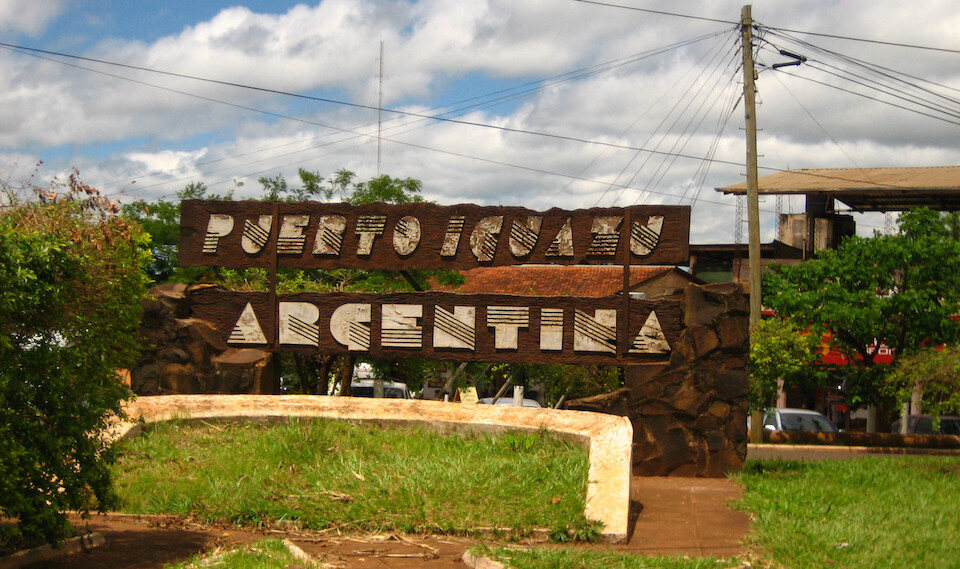
Puerto Iguazu is the small town at the border supporting the tourists who come for the Argentine side of the falls. It also has a gleaming gas station where I happily filled sanDRina's tank with cheaper petrol, costing on average 4.20 Argentine Pesos for a liter (USD 4/gal) and this would be for pure petrol with no ethanol. The bike ran fine all through Brazil, after tweaking the air/fuel mixture (as ethanol burns leaner) and now the settings were back to as they were before Brazil.
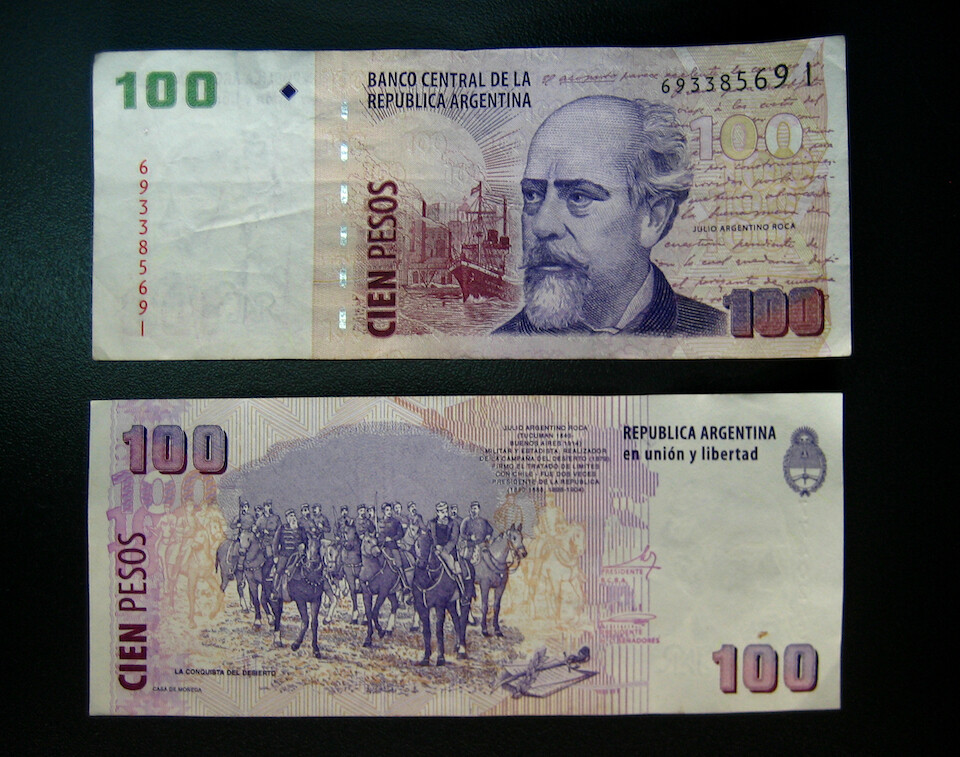
The Argentine 100 Peso note, equal to about USD 25. Argentina went through its own economic collapse in the earning 2000s and the government had to lobe off a couple zeros to control hyperinflation. Things have been steadily progressing since then and they breathed a collective sigh of relief when the global financial crisis in 2008 didn't affect their fragile economy. The stickler about getting money from ATMs in Argentina (and Chile, as well) is that they all charge USD 4 (USD 5 in Chile) per transaction, besides your own bank fees, so I tried to take out the maximum possible each time I had to visit one. In all the other countries, so far, I've managed to find a local bank that didn't charge ATM fees and I only had to pay the 1% that my local bank in Chicago charges (I went with a small Credit Union, instead of a regular bank, since their ATM fees are lower). And since cash now costs 1% more, I use a Capital One credit card where ever possible since they don't charge any foreign transaction fees (the only major card that does this) and I've had no issues with fraudulent transactions or holds on my card.

An overview of Iguazu Falls at the entrance to the park. Most of the falls is on the Argentine side and the main attraction is getting to the Garganta del Diablo (the devil's throat) at the top end of the falls. The local legend (there's always a human story to explain stunning natural phenomena) goes with the tale of two illegitimate lovers running away from her father and he strikes the ground with his staff, resulting in the earth giving way and obstructing the escape of the lovers and now a rock at the base is said to harbor their spirit. Humans get by and succeed in this world by making sense of what they see and experience. Today, with this aerial shot, we can see how the water is slowly cutting at the rock but for older humans, to explain what they saw must've been difficult.

Taking the park train through the Iguazu National Park, which, besides the falls, also protects a huge swathe of rain forest.
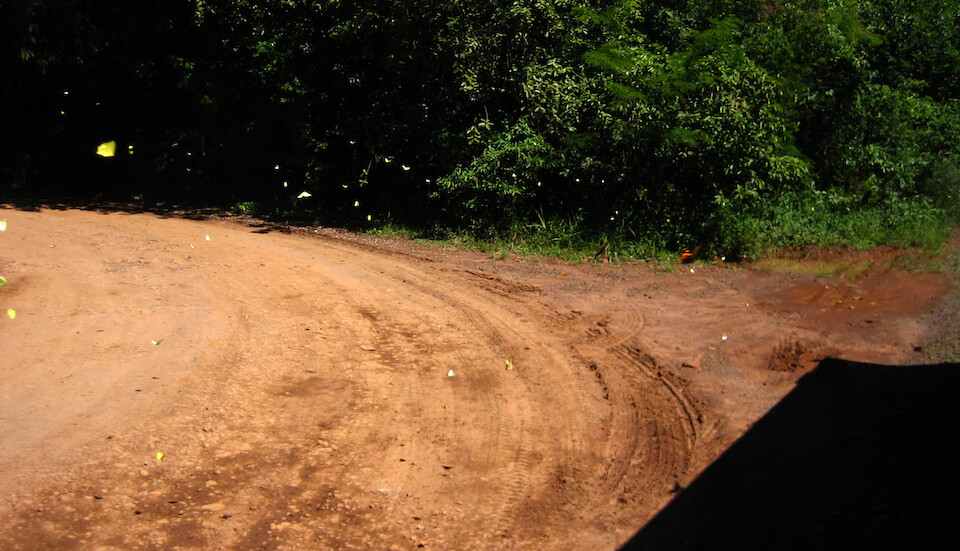
Riding through a cloud of yellow butterflies.
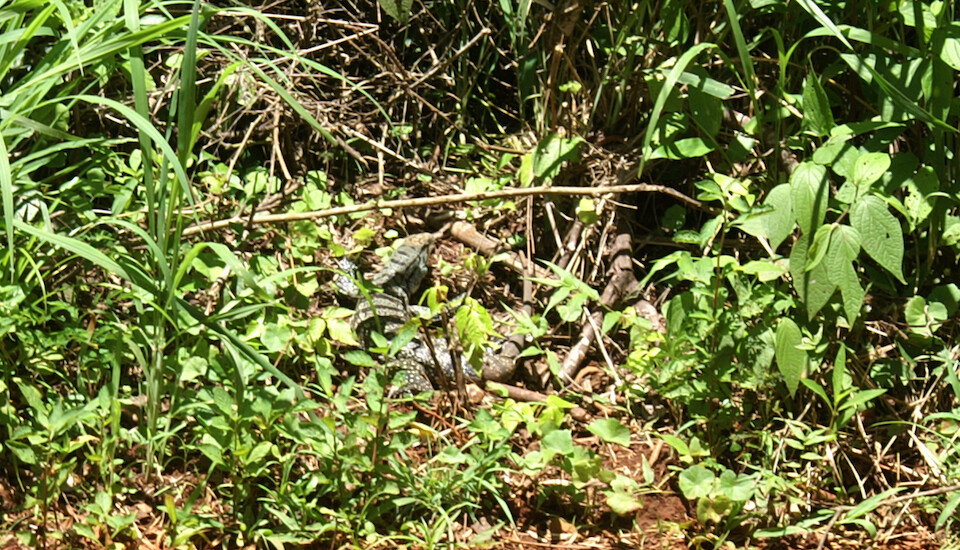
An Iguazu Iguana in the undergrowth, getting some sun.

The mighty Garganta del Diablo. The rock steps down where the force of the water is greatest and this concentrates the flows to make an impressive downward eruption of water.
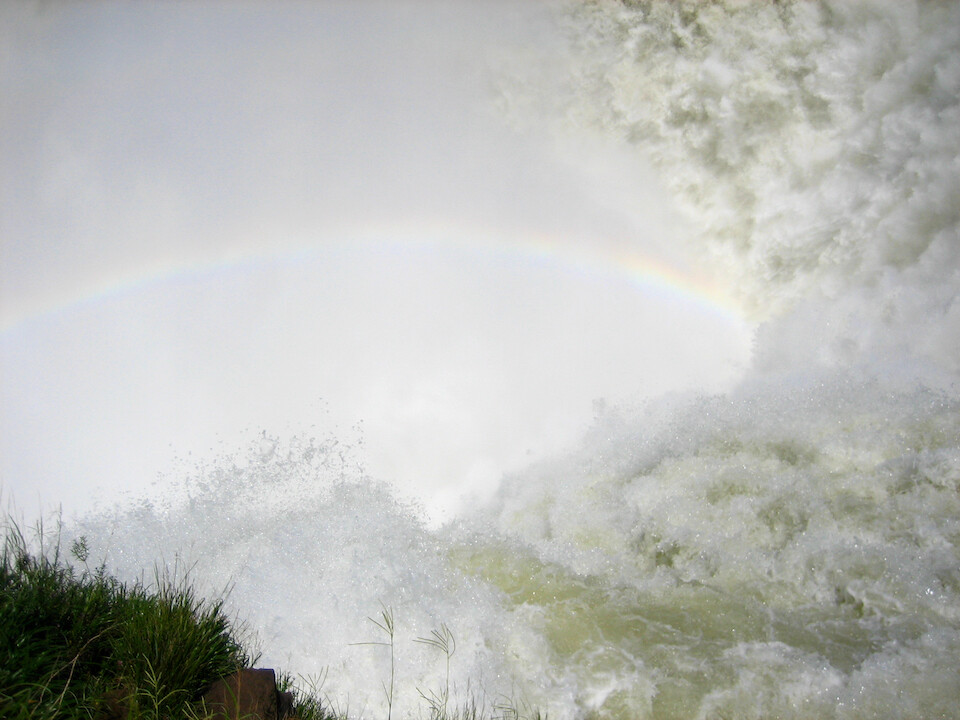
The lookout platform gets you to be right across the Garganta del Diablo and you can see water jumping up from the force it's flowing with and with the heavy mist and afternoon sun, a rainbow forms.
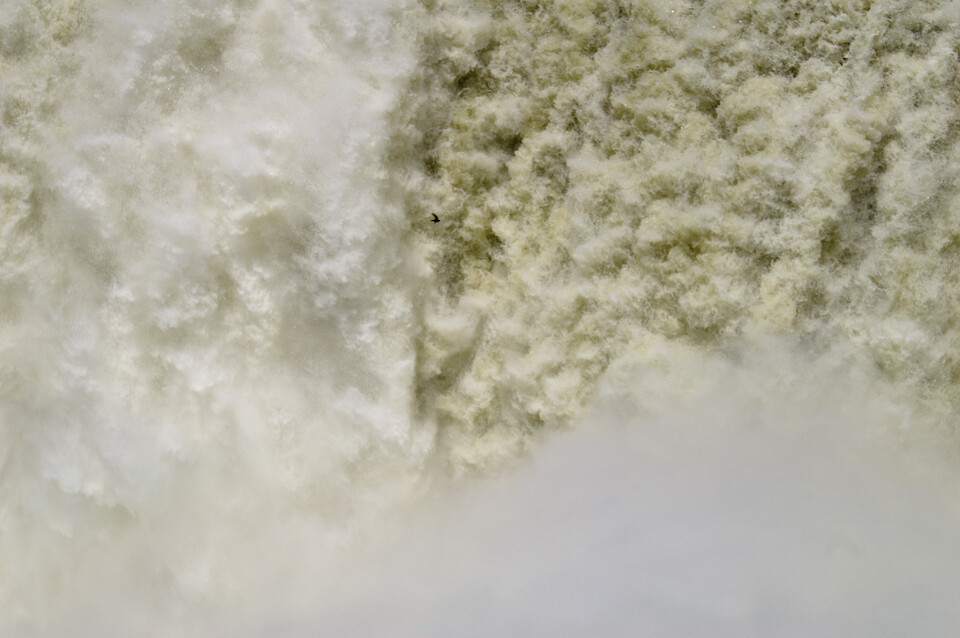
A bird flying past the thundering walls of water. I wonder what that does to its hearing and sight being completely taken over by the roar and the foam of water speeding down to rest with gravity again.
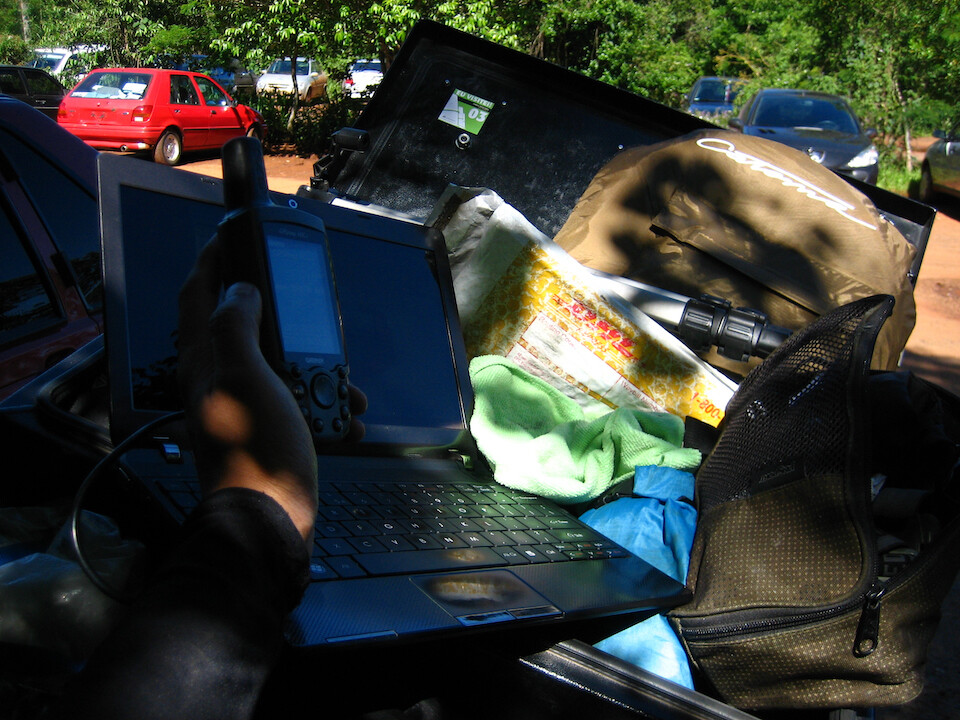
No, I'm not downloading data via a satellite link to my laptop (I wish), but I'm actually uploading the GPS maps for Argentina from the pc to the Garmin 60Cx (I forgot to do this before). Free gps maps are available for most of South America and this has made getting around quite easy.

After a full day of seeing rushing water (in two different languages), I headed south along Rio Parana to Posadas. The visor of the Arai XD dual-sport helmet coming in handy while riding into the sun. It draws unwanted attention for its cool looks, I think because of its use in role-playing video games like Halo (was never a gamer myself, preferring real-world thrills compared to virtual ones) but the benefits of the sun visor comes in handy all the time. It reduces the amount of light falling on your face and that cuts down on fatigue.
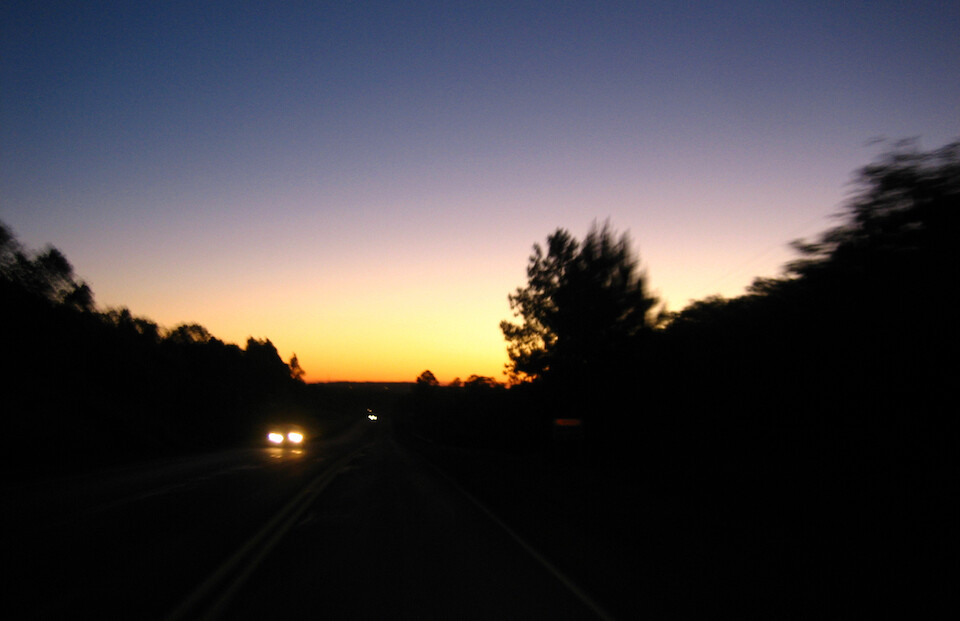
I was riding into the night but with Argentina being a safe country, there wasn't too much to worry about, besides the usual animal danger.
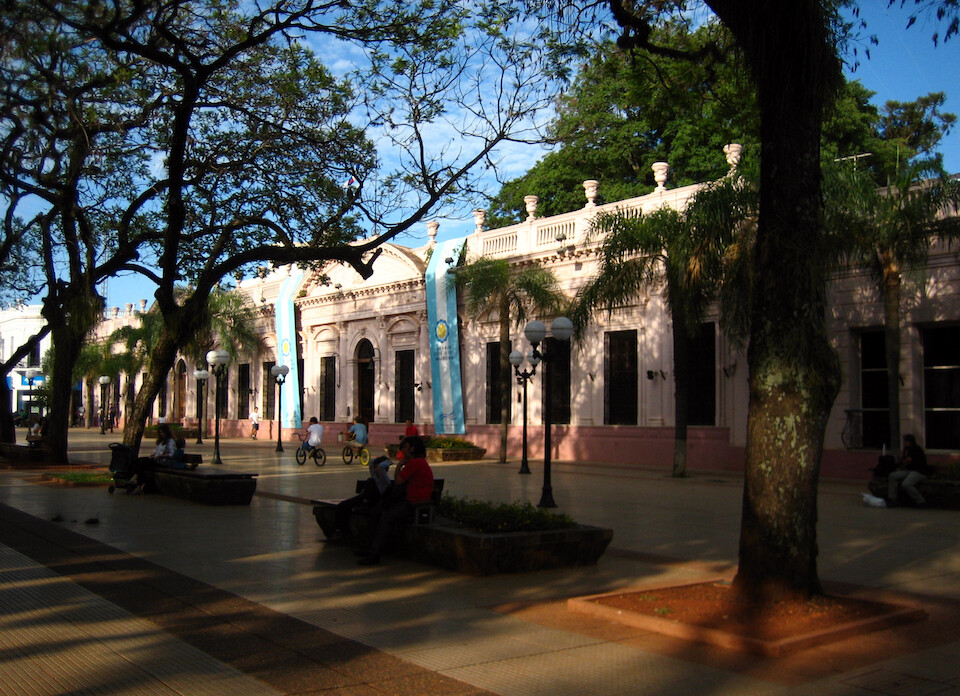
The government building in downtown Posadas, a small city in Argentina's north east, resembling the pink palace in Buenos Aires.
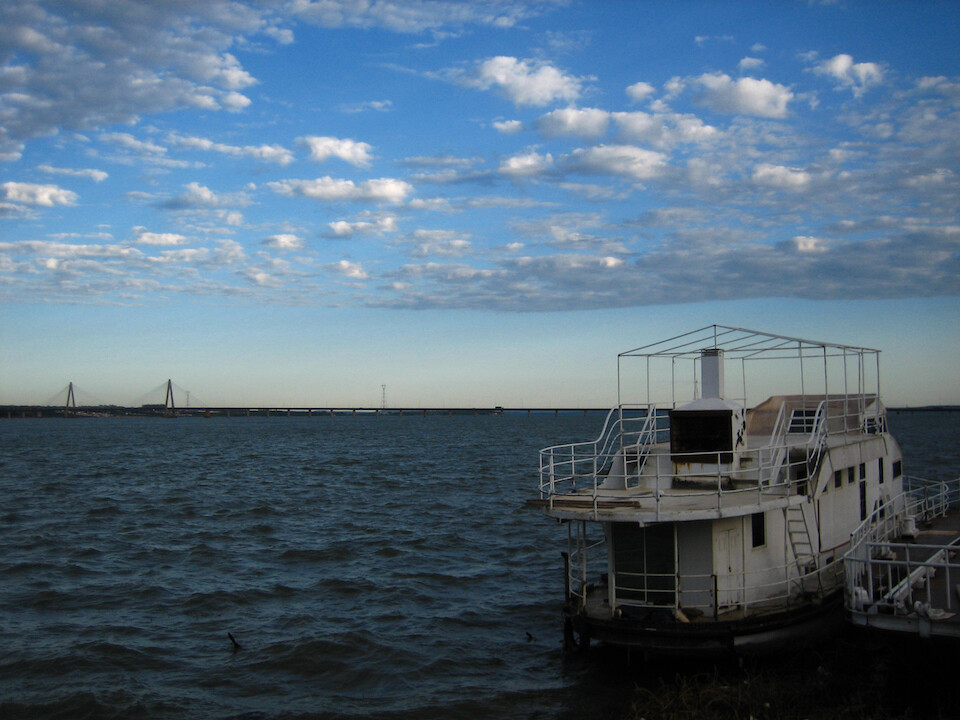
A riverboat moored on the shores of the Rio Parana with Paraguay on the other bank.
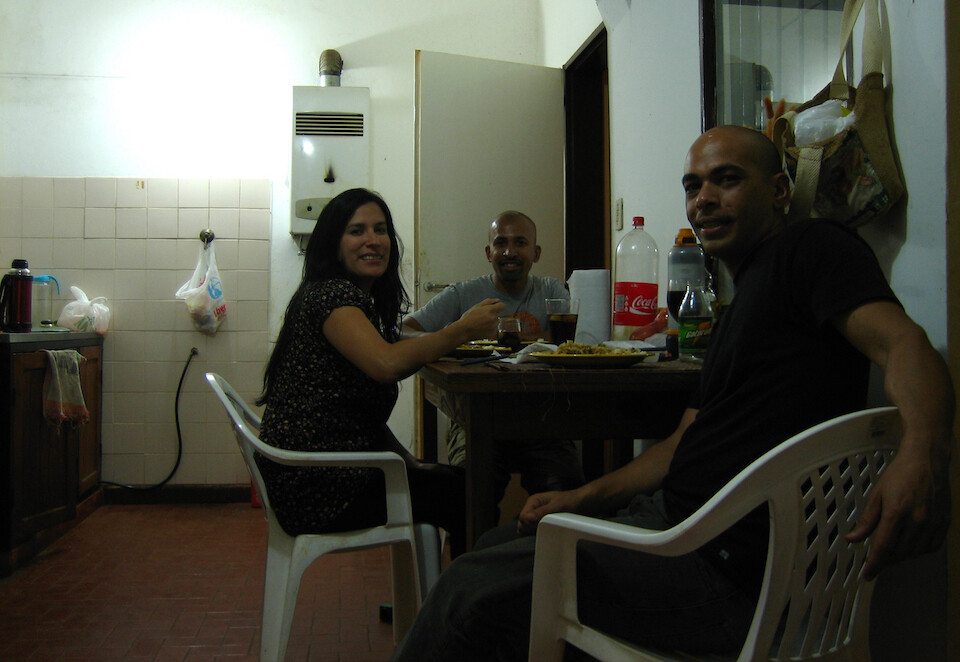
I stayed with Federico and his family, thru CouchSurfing and I was quickly put to use in preparing my chicken curry for them. He's a biologist at the local university and moved here from Corrientes to research frogs. It can seem like an insignificant topic to outsiders, but the changing health of a frog population might be an indicator to changes in the big picture of climate, since they're highly sensitive. We had good discussions about science and particularly how scientific papers get published in various magazines. His English was pretty good, but I asked them to speak only in Spanish as I had to switch the language in my brain from Portuguese to Spanish. I was replying in Portuguese for the first few days in Argentina and it took a good two weeks before Spanish was coming naturally again.
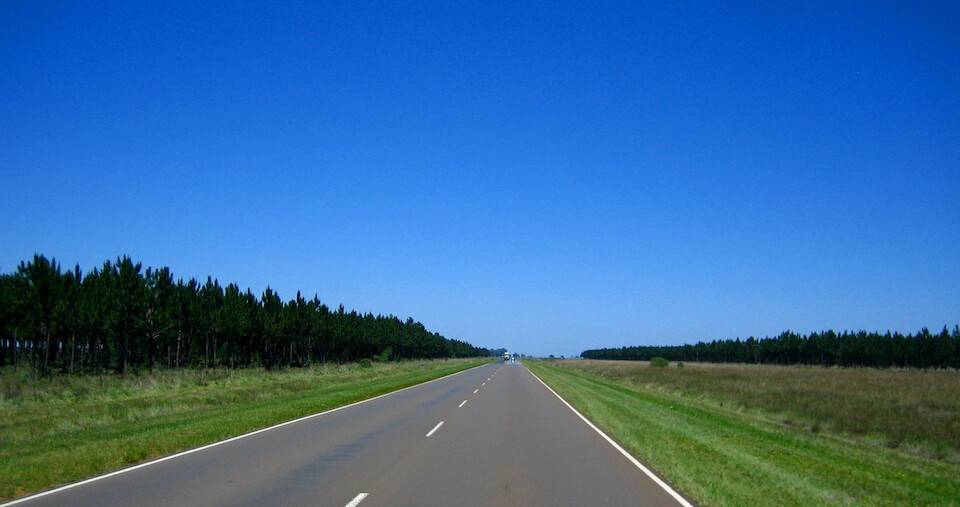
From Posadas, I headed west across Corrientes to Resistencia in the Chaco, then down south to Santa Fe and into Buenos Aires. It's flat country up here in the northeast and audio books were plugged in to help the time go by, along with refreshing Spanish with my Michel Thomas language tapes.
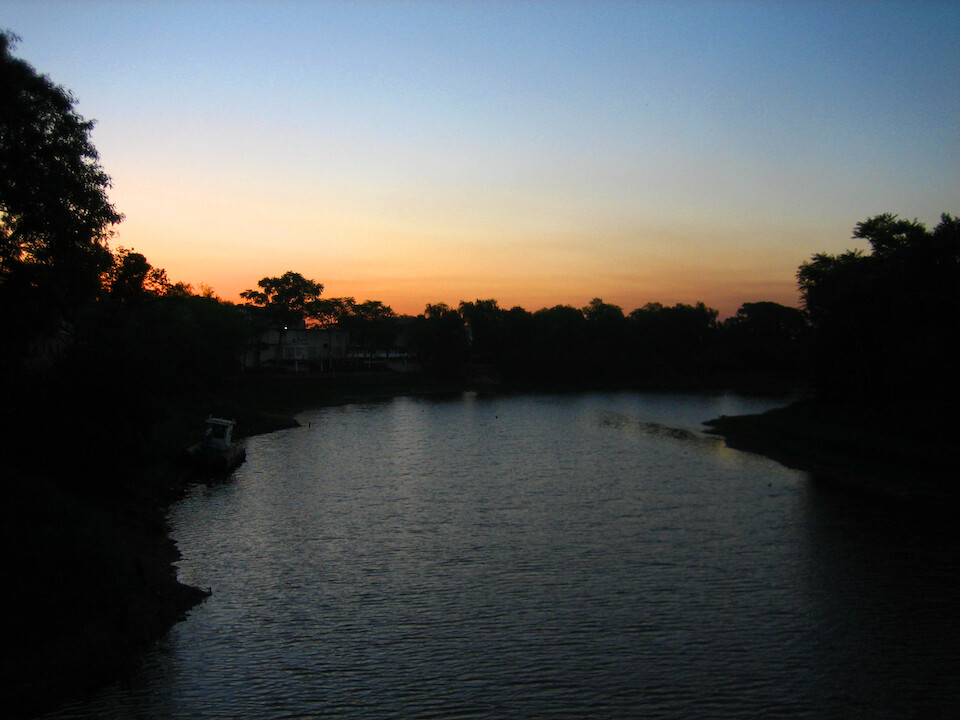
Stopping for the night in Resistencia, a city on the edges of the Argentine Chaco, a dry land extending into Paraguay and Bolivia.
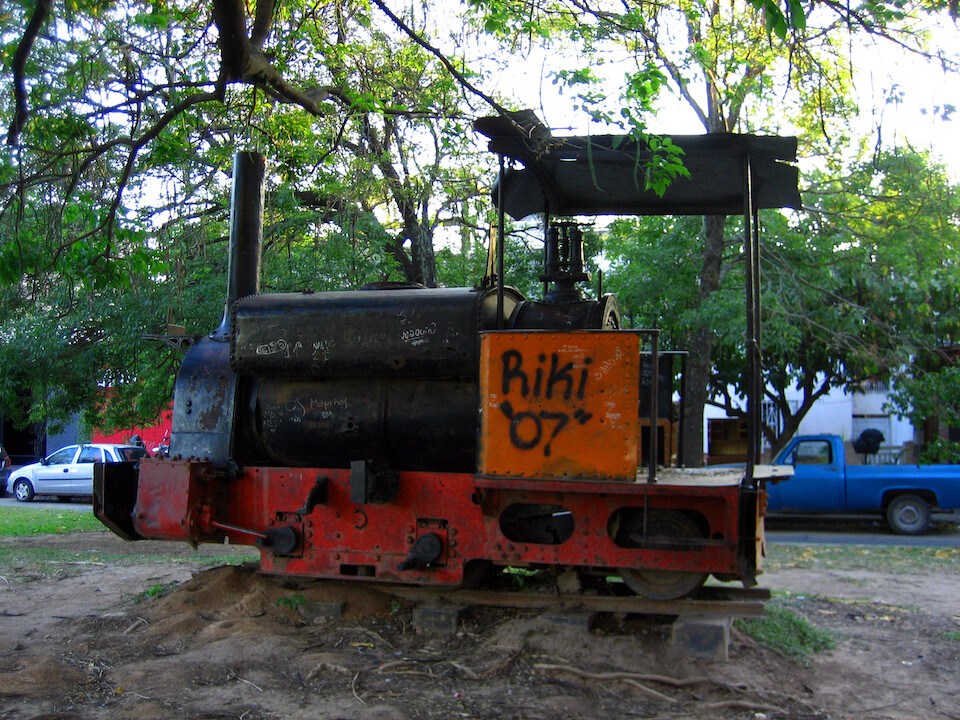
The city is a bit run down but it's cheered up with numerous sculptures placed around the city.
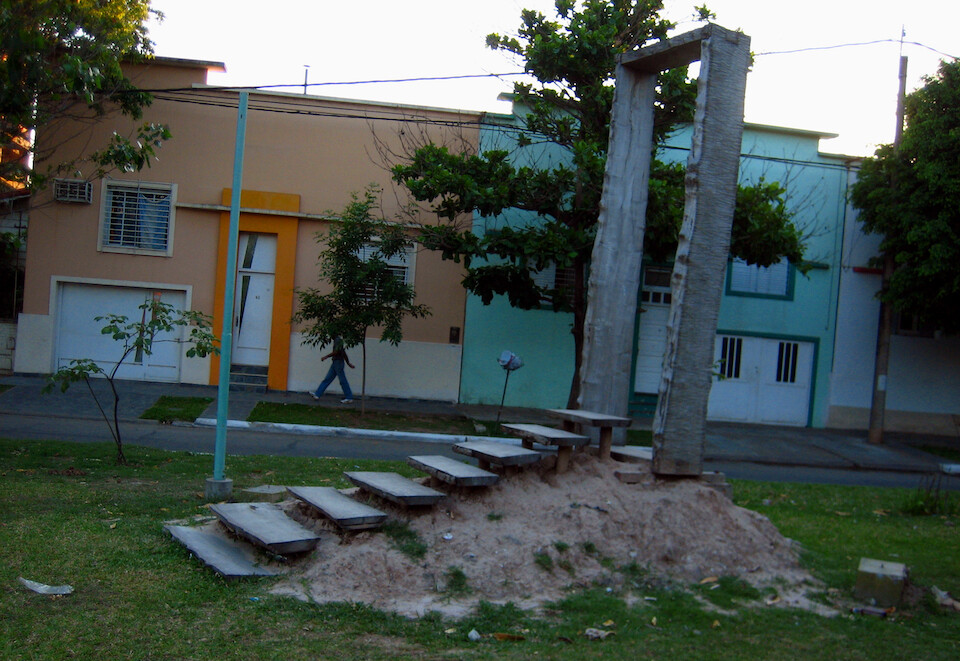
A gateway to your imagination?

A horse and buggy cart tearing through the streets. My first impression of Argentina was that things were a bit run down, but that was ok, as long as it worked. A lot more older cars were still in use and that added a bit of character, along with the continued use of horse carts.

A moto sculpture in a park indicating how moto-crazy most Argentines are.
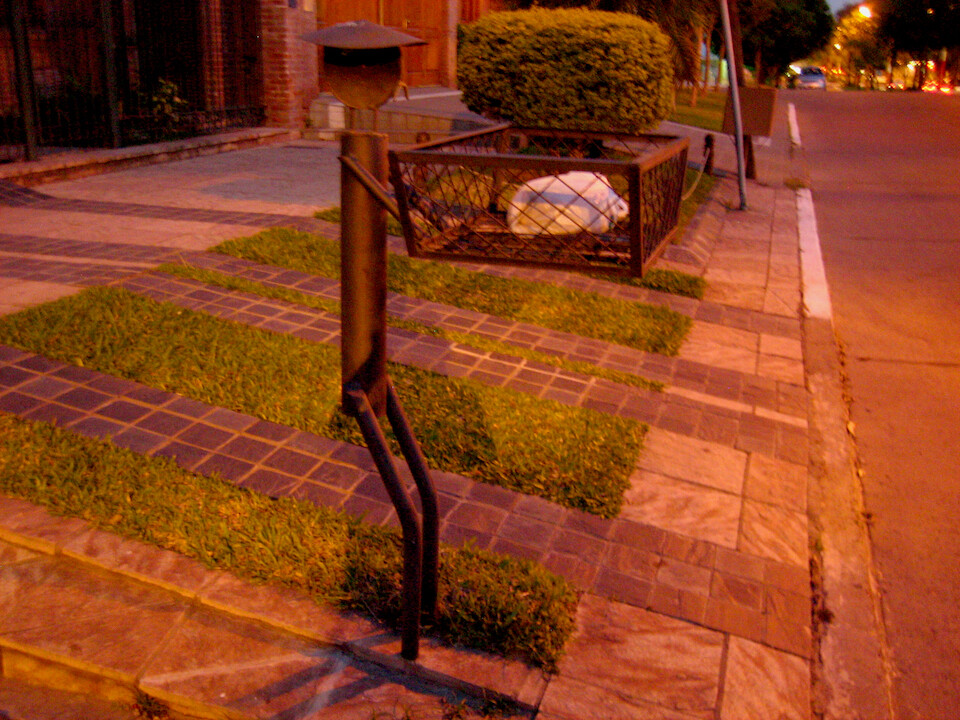
A fancy garbage-holder. In most of South America, I noted how instead of sealed garbage containers on the streets, to prevent dogs and other animals from getting into the garbage, it's raised up above the ground waiting to be picked up.
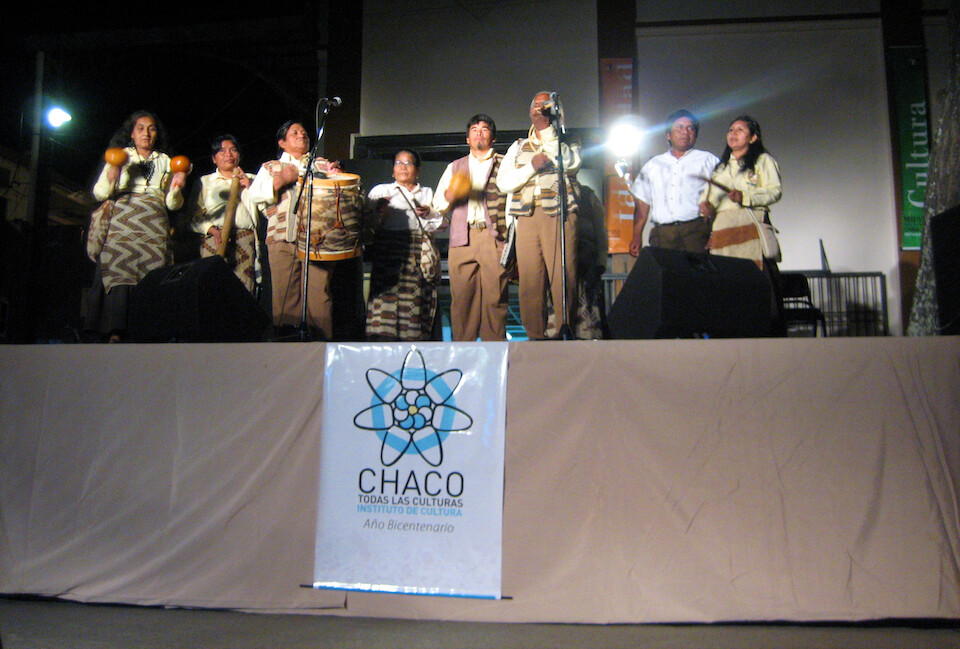
Catching a performance by an indigenous group from the Chaco.

I stayed with Javier for the night, thru CS. He's a network administrator at the local university and shared with me lots of good music.
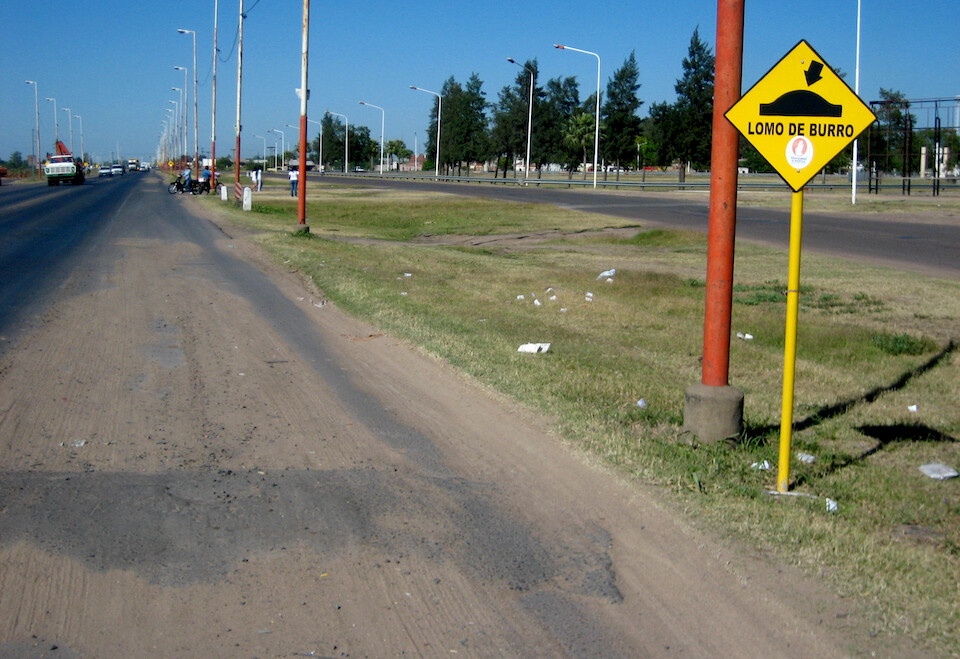
One could make an interesting photo book of all the different things that speed bumps are called around the world. Here, it's referred to as a donkey's butt.
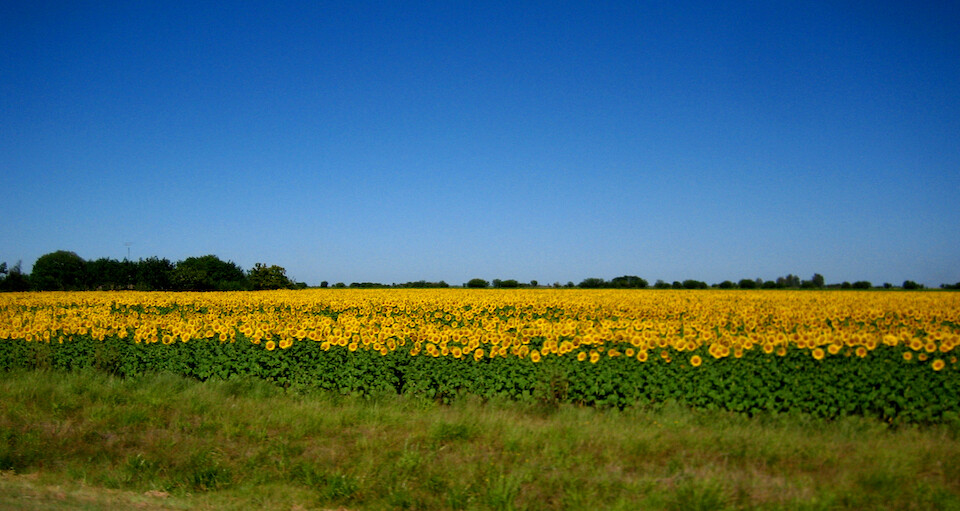
Sunflower fields on the way down to Santa Fe.
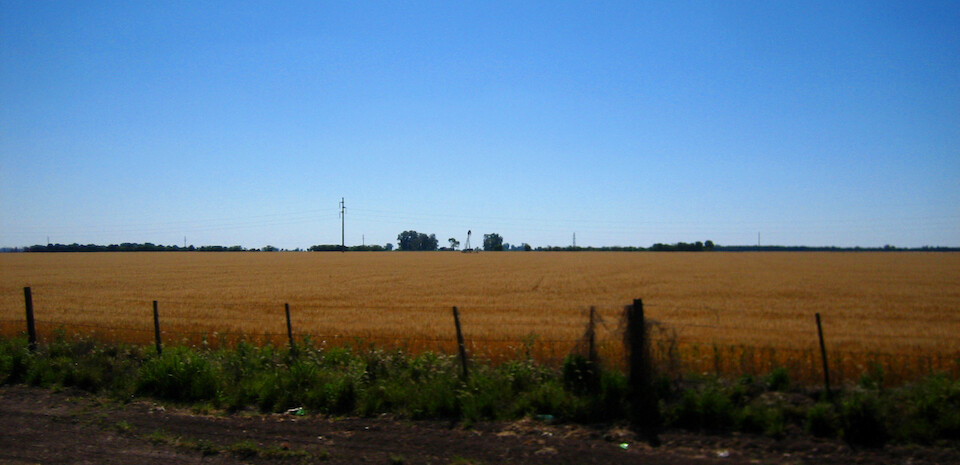
But most of the 550 km journey had bland scenery like this of dry fields.
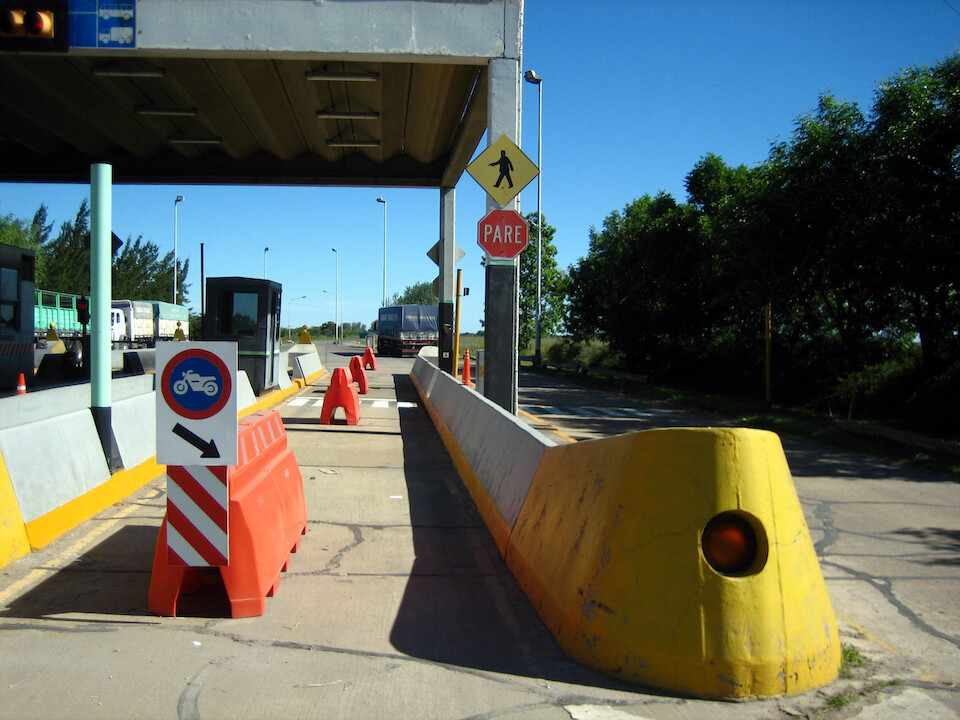
Happy to see motorcycles don't have to pay tolls in Argentina, but I soon realized this changes from toll booth to toll booth with everyone having to pay in Buenos Aires.
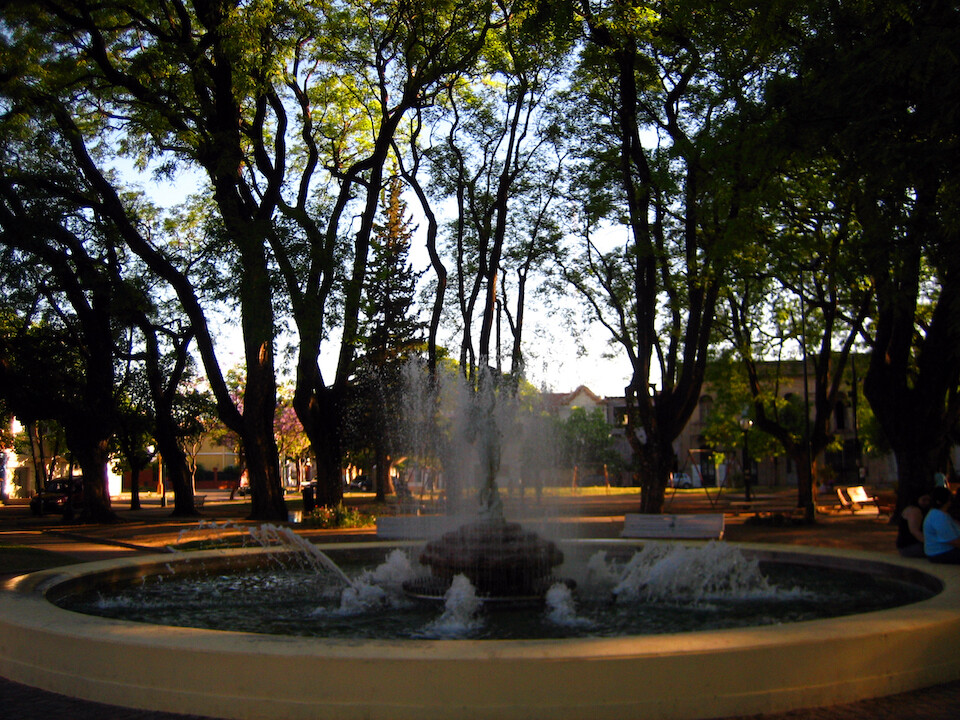
Stopping for the night in Santa Fe, a pleasant city along the Parana River.
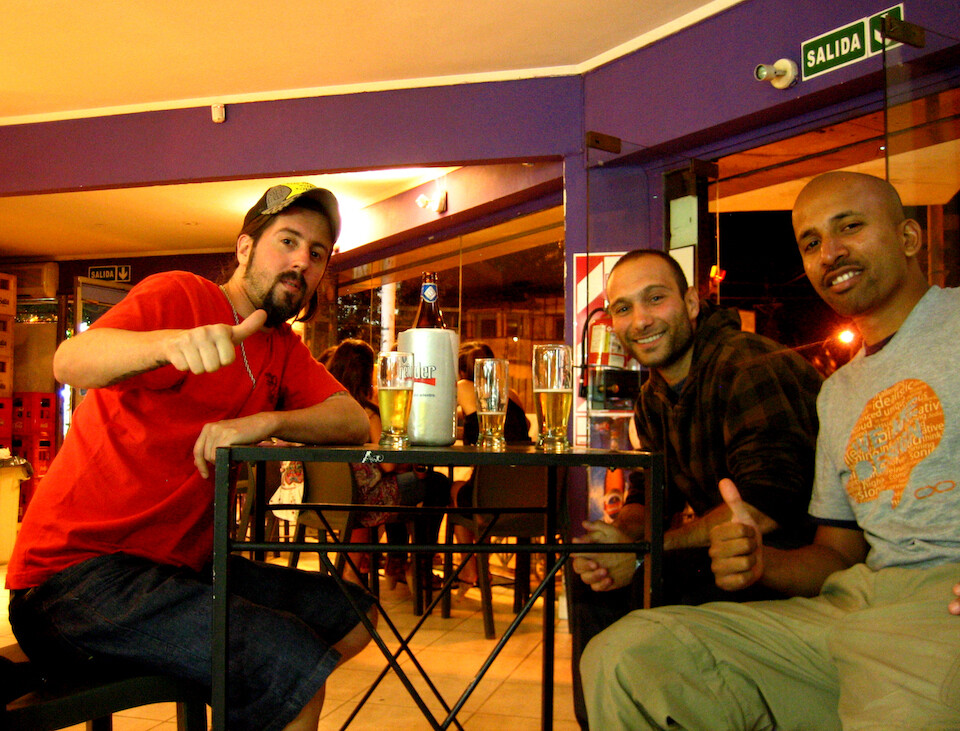
I spent the night at Martin's (left) thru CS and we met up with Javier from Spain, a teacher who was traveling for a few weeks around Argentina. Martin works at a nearby hostel and is in the music business.
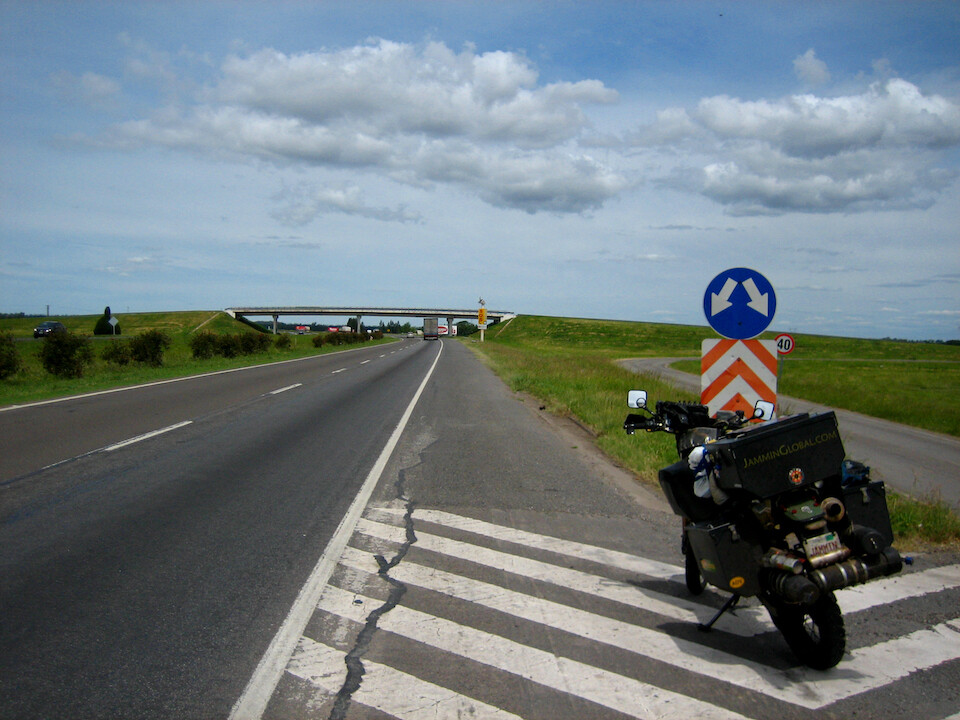
One last break before heading into the dense traffic of Buenos Aires.
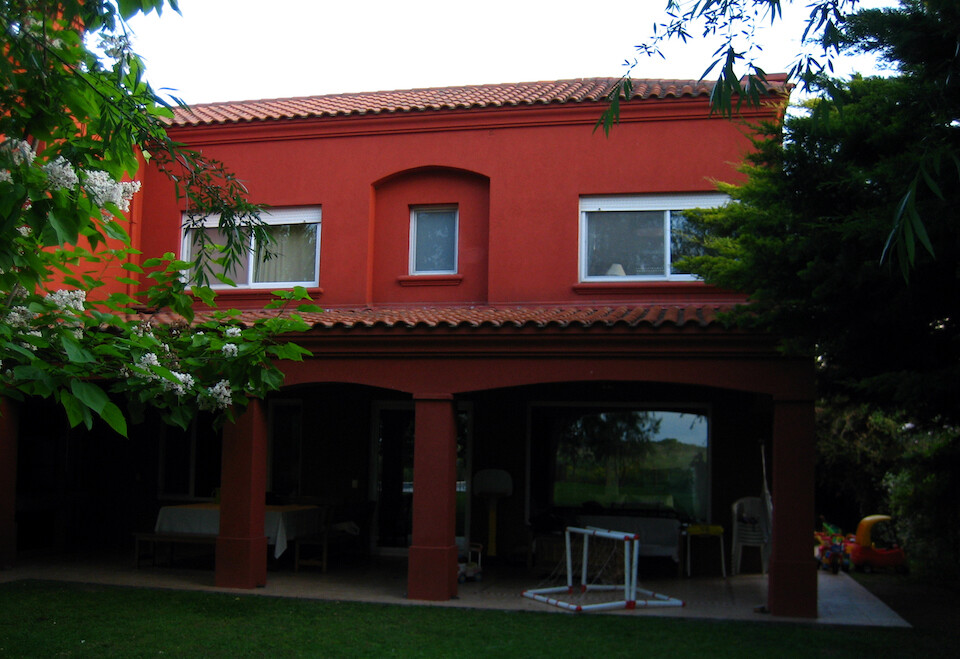
Stopping by Santiago's house in the suburbs of Buenos Aires to collect the care package he brought for me from Chicago. The most important thing he brought was a new bracket for my GoPro helmet camera, which broke in Brazil and was limiting the amount of filming that I did.
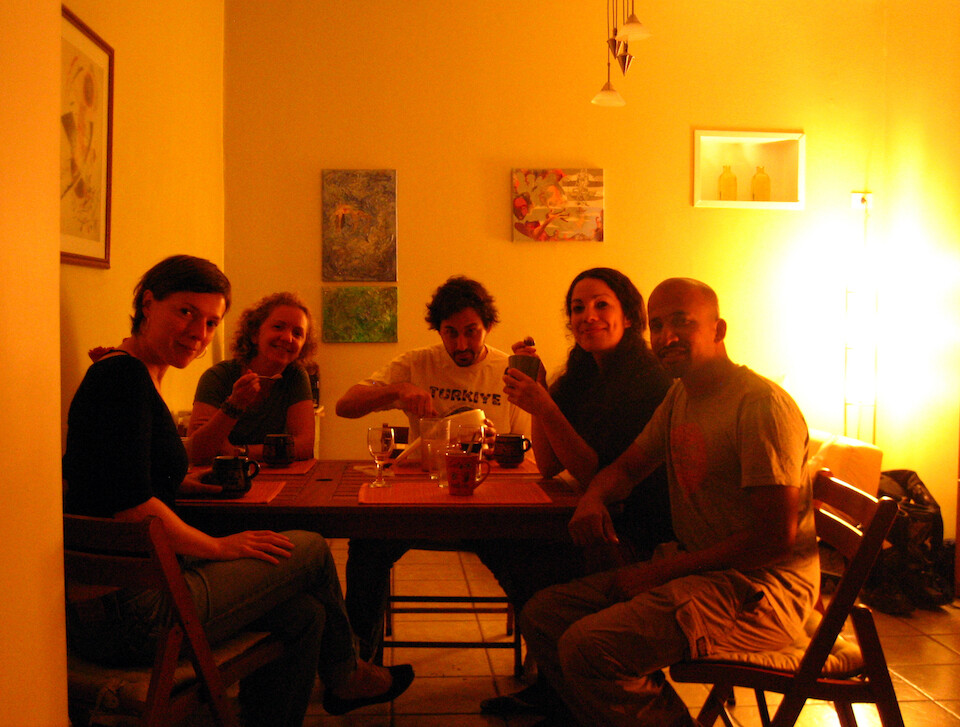
I stayed with Maru (on my right) in Palermo, a trendy, yuppie part of the city and I prepared a dinner for a small couchsurfing gathering at her place.
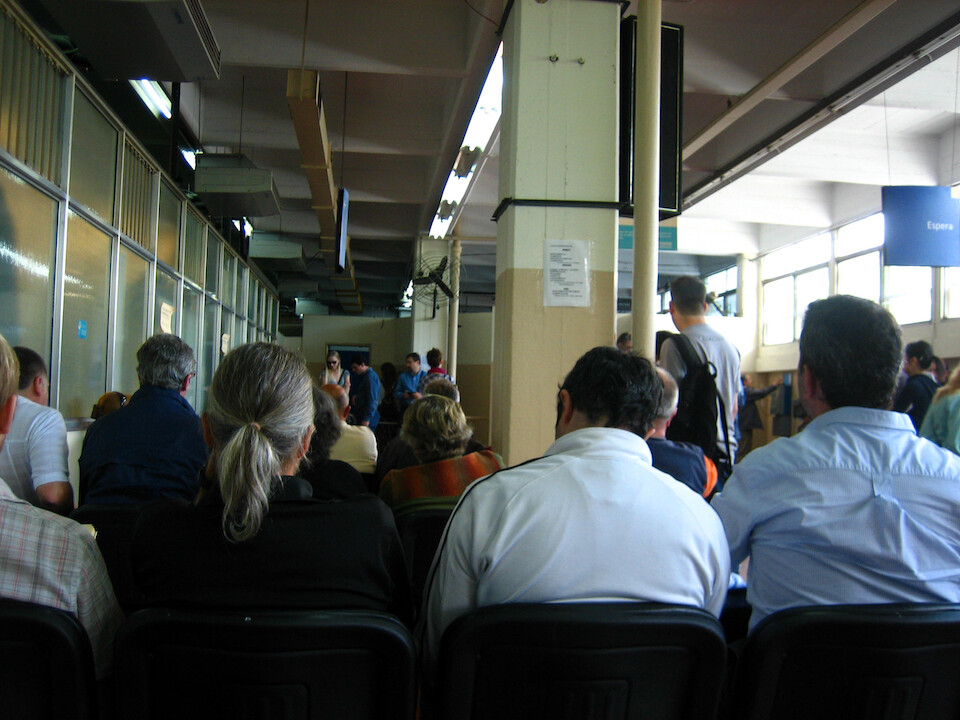
My week in BsAs was chock full of chores to get done and I knew I would be spending more time here later at the end of my trip and would see more of the touristic side of the city then. Waiting patiently for hours at the main post office in order to collect the new panniers that Happy Trails sent. I contacted them after the welds started to split (months ago in Ecuador) and they wanted to send me a replacement set. It just so happened that sanDRina got dropped a few times after that with the panniers getting a lot of abuse, so a new set of boxes would be much appreciated. The customs duty is pretty steep in Argentina, coming out to 50% the value of the items including the cost to ship it (which I don't understand). I contacted Javier at Dakar Motors, who agreed to buy my old set of panniers and this helped offset the duty on the new set.
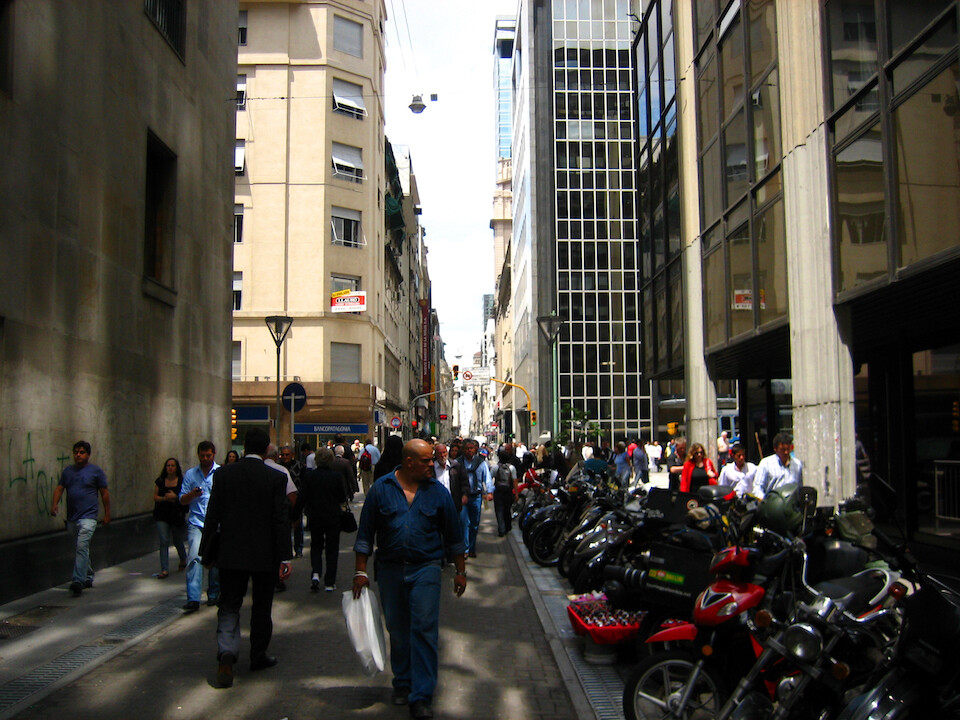
Parking in downtown BsAs, along with the other motos. sanDRina almost blends in, but the huge profile with the panniers gives her away. I went to visit the Grimaldi office to initiate the booking for the Trans-Atlantic voyage towards Africa.

Santiago also received the carburetor parts that were sent from Gus through my sister. The new jet needle at the correct length, compared to the old one at a shorter length. I broke the tip when trying to fix a broken throttle cable and as a result, sanDRina was running rich since then until this new needle goes in. The profile of the needle affects the air/fuel mixture in the intake of the engine and I tried to find a replacement part in São Paulo, but no luck. At last, sanDRina would be running smooth, after the major overhaul done to her recently.
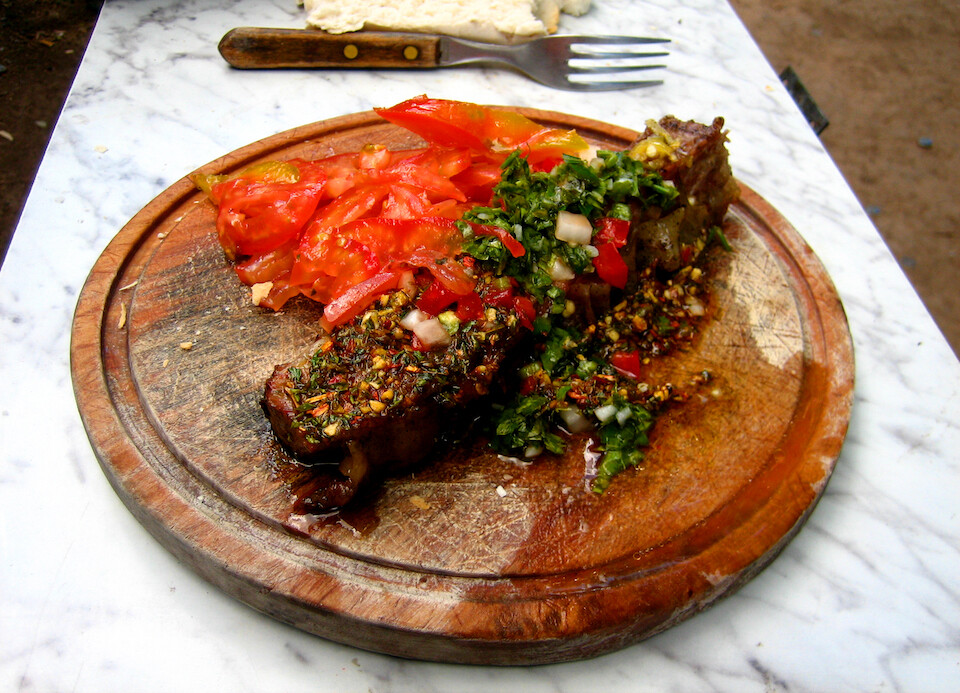
Argentina's renowned beef steaks. A small juicy cut like this at a roadside stall in the city goes for P12 (USD 3). Besides the steak, I love the olive-oil based dressings known as chimichuri, a mix of cilantro, spices, tomatoes. No one knows for sure where the word 'chimichuri' comes from but someone at a roadside stall told me that it comes from when the British were briefly here and since they already loved curry from India, they said it was a portmanteau from 'give-me-the-curry' when they ate their steaks, presumably. Sounds good to me. If you say it fast enough, I guess you could get there or pass it through some Chinese-whispers.
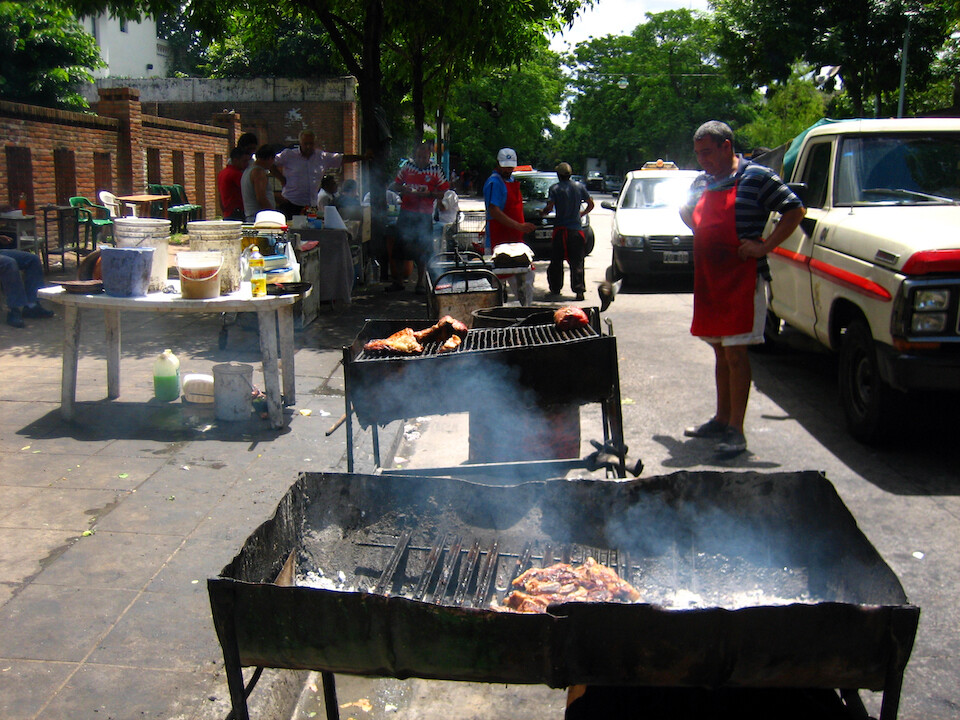
This is where the steak was cooked-up, in a neighborhood away from the glam of Palermo.
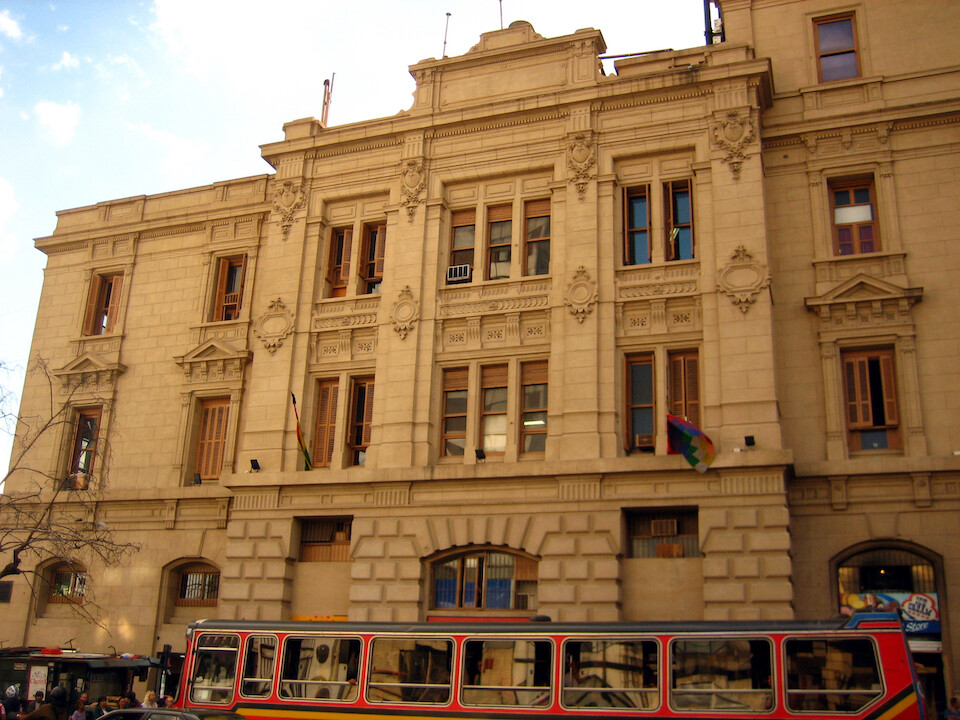
Another admin chore I had to take care of was getting a second visa for my second visit to Bolivia from here, to see the Salar de Uyuni. They wouldn't cooperate in Rio, saying I could only get it at the border, but that's hardly a sure thing for me.
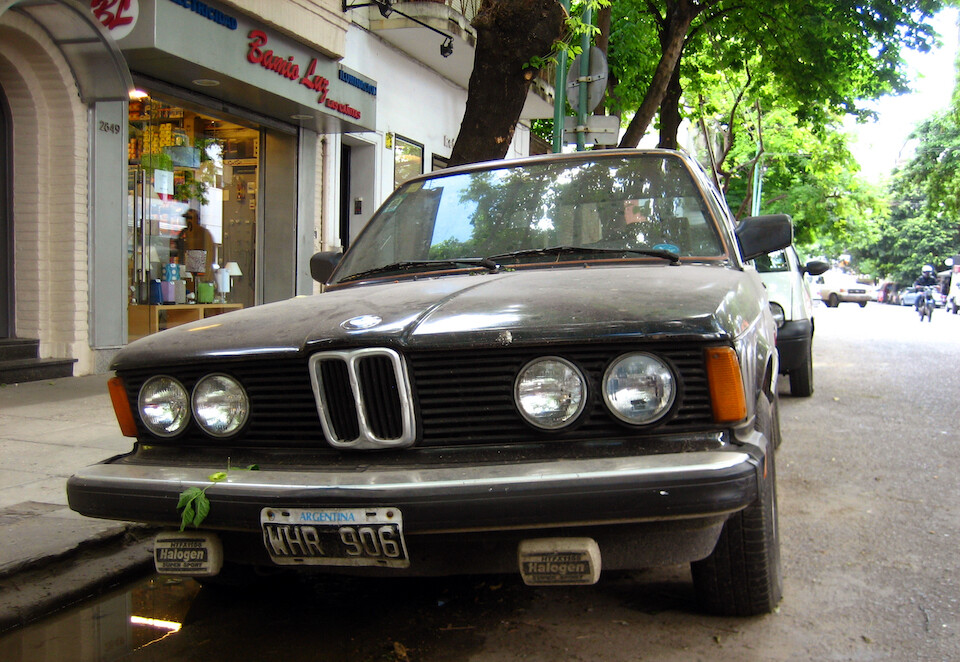
Along with twenty and thirty year old Fords and Chevys, there's a lot of classic BMWs and Mercs around BsAs. This handsome 320i was parked in front of Maru's place. I had a 92 325i, which started my appreciation for German engineering.
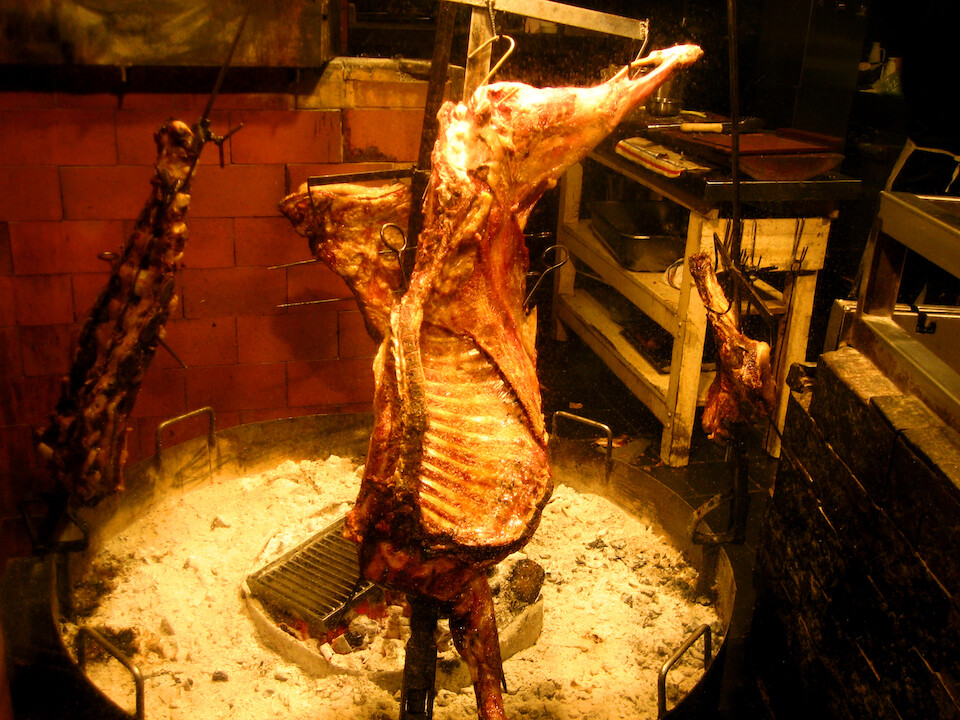
Cordero Fuguenio, lamb grilled like it's done in Tierra del Fuego.
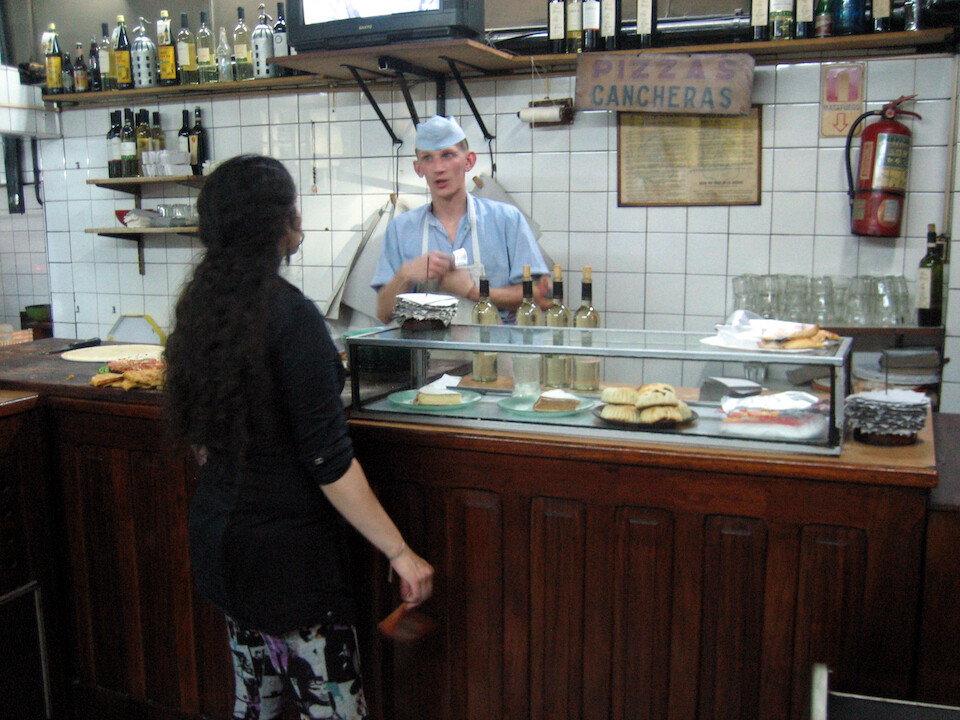
For dinner one of the nights, Maru took us to a neighborhood establishment, an old-time pizzeria.
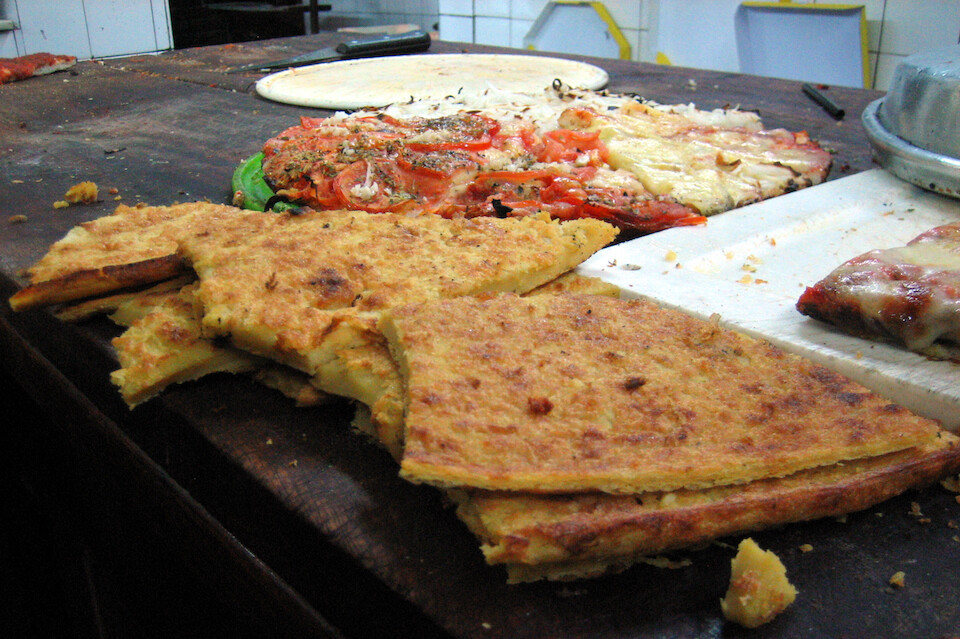
You could say it's the Italian influence, but pizza culture is ubiquitous. Besides a variety of tasty classic pizzas, they had this one made of garbanzo (chick-pea, channa) flour, almost like a pancake. I miss food made of garbanzo, which is common in India.
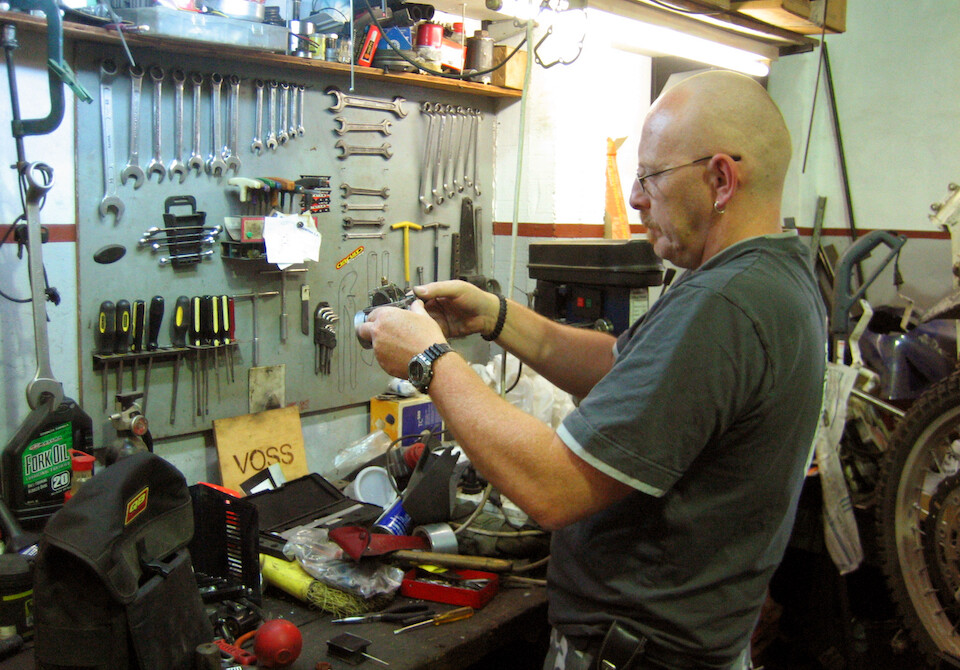
I couldn't get the fine tuning set on the carb, so Javier at Dakar Motos helped out. He and his wife, Sandra have been running a motorcycle shop in Buenos Aires for numerous years and are well-known in the motorcycling community for being a helping hand to overland travelers through the years. They organize shipping bikes in and out of Argentina and whatever else overland travelers need. There are also a few cheap beds in one corner of the shop.
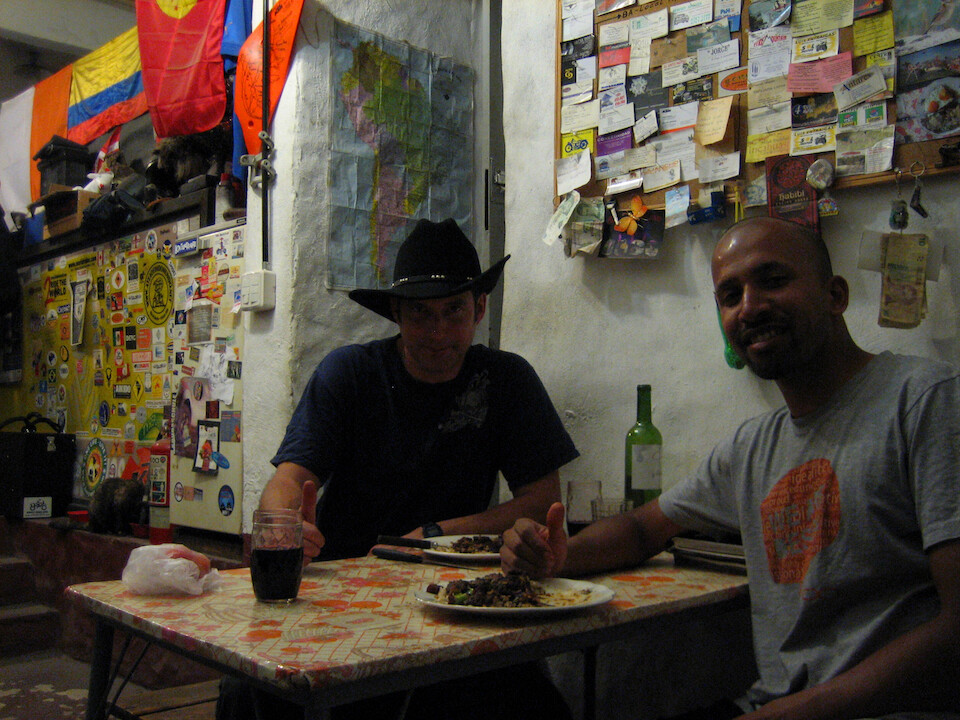
I spent a few nights there as I was fine-tuning sanDRina and I cooked up a meal for Gus and I. He's a Canadian, traveling on a BMW F650 and has been invovled in a wide-array of occupations. He's looking into moving into the lake district of Argentina.
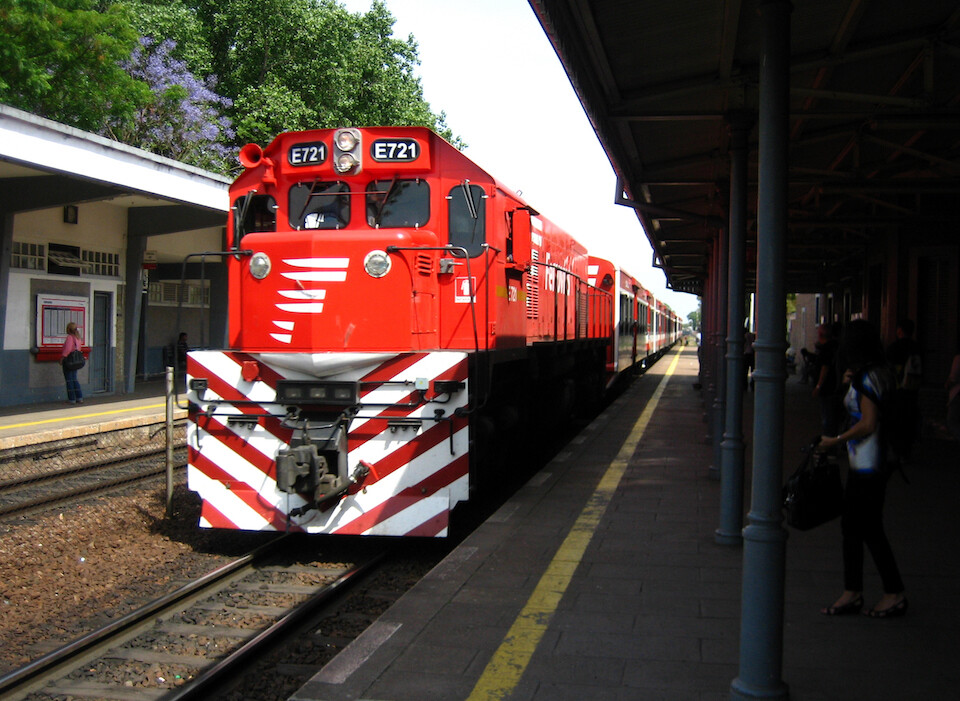
Taking the city metro train into downtown, as the bike shop is in the suburbs.
All though I didn't see any of the sights that Buenos Aires is known for, I got a good look at working life in this mega city and that's what traveling is all about, experiencing someone else's culture.